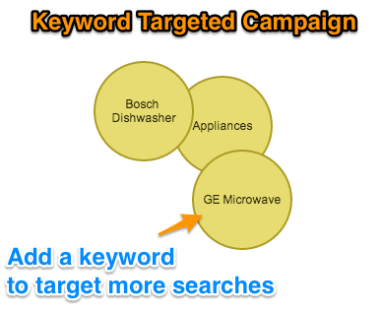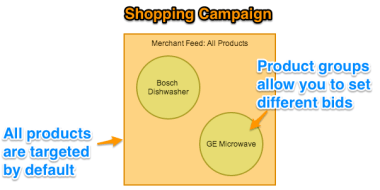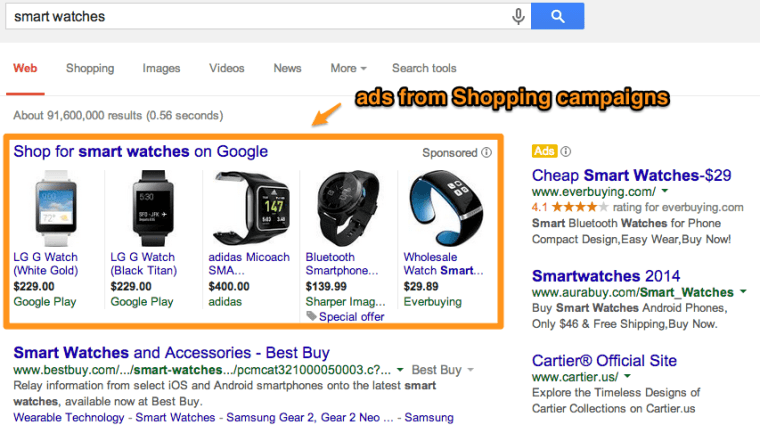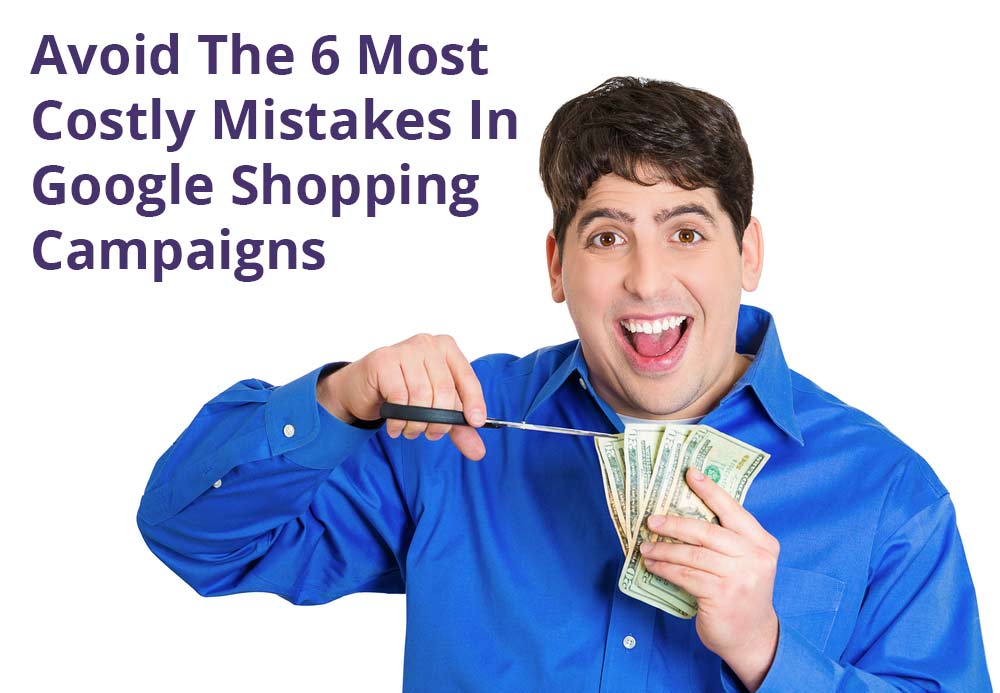Have you transitioned your Product Listing Ads to Google’s new campaign type, Shopping campaigns, yet? If not, what are you waiting for? Google is scheduled to retire PLA campaigns at the end of August, after several months of allowing advertisers run both PLA campaigns and Shopping campaigns.
By this point, Optmyzr (my company), Marin, Google, and others have introduced new tools designed to make the transition smoother, but there are still tons of common mistakes that can cost you money. For a smoother transition, here are six things you should know to avoid making those costly mistakes.
In Shopping Campaigns Every Product is Targeted By Default
The way to target when to show ads in Shopping campaigns is very different from what we’re used to in search, display, and PLA campaigns. Normally, you need to add targeting to get ads to show, i.e. add keywords to tell Google when to show our ads. In Shopping campaigns, all products in the merchant feed are targeted by default.
While Product Groups may sound like the equivalent of keywords or placements, they’re not the same at all. Adding Product Groups is merely carving up your product feed into smaller groups to make it possible to set different bids or exclude products from being targeted.
 In a keyword targeted search campaign, your ad will not show for any search until you add keywords to increase your targeting. Image courtesy of Optmyzr.com.
In a keyword targeted search campaign, your ad will not show for any search until you add keywords to increase your targeting. Image courtesy of Optmyzr.com. In a shopping campaign, your ads are automatically eligible to show for any search that matches a product you sell. Product groups allow you to exclude products or set different bids.
In a shopping campaign, your ads are automatically eligible to show for any search that matches a product you sell. Product groups allow you to exclude products or set different bids.Image courtesy of Optmyzr.com.
So, don’t assume that your ad will not show because you did not add a Product Group for a particular brand or type of product. That’s the first mistake that could rack up a large unwanted advertising bill.
Don’t Compete Against Yourself
With Shopping ads, it’s easy to create the equivalent of duplicate keywords, which make it nearly impossible to predict which ads will show and what bids will be used. For example, when you have overlapping keywords, lowering the bid for one may simply shift traffic to another and interfere with your bid management strategy.
The same overlap can easily happen in Shopping campaigns when advertisers create multiple Product Groups that contain the same products.
Say you’re selling electronics like LG televisions. If you create one Product Group where the ‘product type’ is ‘televisions’ and another where the ‘brand’ is ‘LG’, the LG televisions are effectively included in both Product Groups. Now Google can choose which promotional text to show, what bid to use, what device bid modifier to use, and which negative keywords to respect.
Instead, structure your campaigns, ad groups, and Product Groups like you would structure a store and put every product in the place where it makes the most sense.
Otherwise, you will create the equivalent of duplicate keywords and will have a management and reporting nightmare on your hands.
Don’t Rely on Ad Group Bids
Shopping campaigns use ad groups as part of the account structure, much like any other type of campaign does. However, I believe this is mostly because AdWords expects campaigns to have ad groups and not necessarily because Google thought ad groups made sense to use in the context of Shopping campaigns.
The fact that you can structure your Shopping ads into multiple campaigns and ad groups has significant benefits, like giving you the ability to set different budgets, different negative keywords, and different bid modifiers.
However it does not work the way you might expect in respect to the max CPC bid. While you have to set a max CPC for each ad group, it doesn’t do a lot… it only serves to set a starting bid for any new Product Group created under it. Once the Product Group is created, it gets its own bid and loses all connection to the ad group bid. In other words, Product Groups do NOT inherit the ad group bid the way a keyword does.
So don’t assume changing ad group bids in Shopping campaigns is a form of bid management. To manage bids for Shopping campaigns, you have to manage the bids at the lowest level of Product Groups. This task is tedious, especially when dealing with thousands of Product Groups spread across multiple campaigns.
For easier management, we have a Shopping Bidder tool at Optmyzr or you could use bulk bid uploads in the AdWords interface to streamline bid management.
Don’t Set Up More Product Groups Than You Can Manage
This ties into point one and three. Remember, there is no need to add Product Groups to tell Google when to show your ads, and bids have to be set for every single Product Group at the lowest level. As a result, it’s important to avoid going overboard when creating Product Groups in your Shopping campaigns.
Here’s why: If you create Product Groups for every product in your catalog, you have to set bids for every individual product, something that is not only time-consuming but also impossible to do correctly because some products simply won’t have enough data to make a decision with.
When this happens with keywords, we simply leave the bid blank and trust the ad group bid will do the job. That doesn’t work in Shopping campaigns, so once you create your structure, you’re on the hook for managing every single element of it, down to every item, even the ones with a single impression in a month.
So build out your structure methodically and only create further subdivisions of Product Groups when it looks like you’ll still have enough data to make good bid decisions.
Don’t Overlook Your Feed Quality
We’re all used to managing the success of our AdWords campaigns in AdWords, whether we use the native UI, the AdWords Editor, the API, or a third-party management tool. With Shopping campaigns, a lot of the success depends on the quality of the Merchant Feed, which has to be managed outside of our usual set of tools.
So if you find your ads are not showing for some of the products you think are relevant to what you sell, you need to evaluate the quality of the feed. Do your description and title include important keywords, is the price competitive, have you created promotions for products, have you used the correct product categorization and unique product identifiers?
Google needs all of these to determine when to show your ad, so learn how to make changes to the data feed so that you can test what works and what doesn’t.
Clean up Quality Score
Finally, it’s important to understand Quality Score (QS) and how it works for Shopping campaigns. I believe the system is relatively rudimentary compared to Quality Score for search ads, but it still determines when a product is a good or a bad match for a particular search query.
If your product has a low CTR for a query, its QS may drop and your ad may no longer show. Luckily, Google has introduced two new columns for Shopping campaigns that will help evaluate when this problem arises: benchmark CTR and benchmark CPC.
These benchmark columns give you an idea of how your products are faring compared to your competitors. Unfortunately the data is only available for groups of products and not for individual products. So say that you find that the benchmark CTR is low for a group of products and the individual product also has a very low CTR; it may be time to undo the QS damage.
Resetting the QS is as easy as giving the product a new ID. Google advises against this in their documentation but that’s because it makes them lose track of how a product performed. Of course if you change the ID for a product that performed well, you’ll lose its good QS so do this carefully.
However, when you know your first pass at Shopping ads wasn’t your best effort and maybe your CTR was low because you had lousy product images, now you know how to get a fresh start with a new QS.
What to Expect During The Migration to Shopping Campaigns
As everyone wraps up their migration from PLAs to Shopping campaigns, or tries Shopping campaigns for the first time, there is sure to be some increased competition and CPCs may rise, so the next few weeks may be a roller-coaster for e-commerce advertisers.
We’ll also learn more about how things work, new best practices will arise, and new tools will be built (we already have a couple new ones in the works) so this should be an interesting time for advertisers, and in my opinion, a fun time when our jobs change from dealing with more tedious and routine management to learning the ropes of a whole new system.
I look forward to reading how others have fared in the transition and hope to hear from you in the comments.
 Screenshot taken Aug 12, 2014 from Google.com
Screenshot taken Aug 12, 2014 from Google.com
Featured Image: PathDoc via Shutterstock




